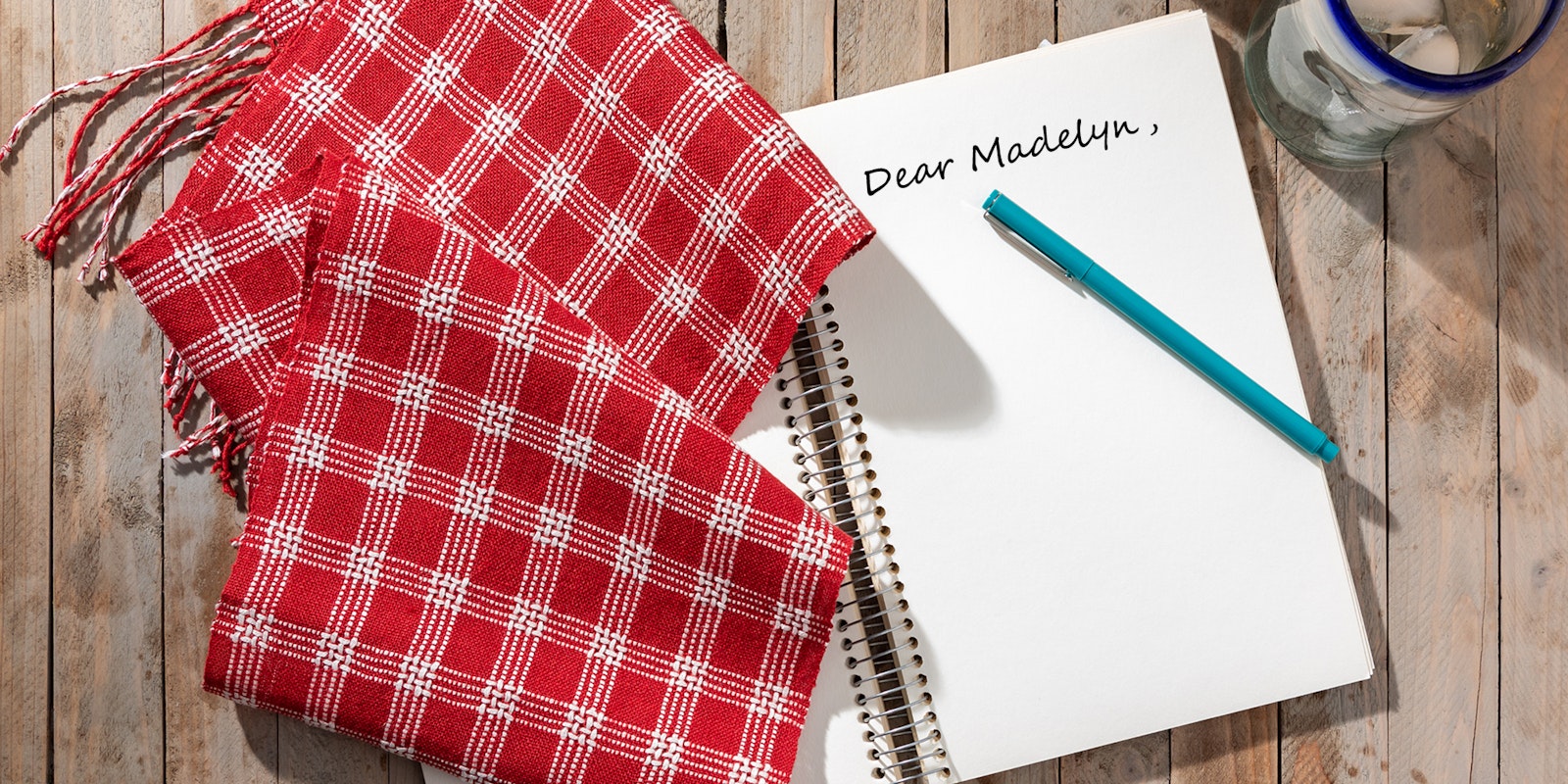Hi Madelyn,
I would love to see an article in Handwoven about how to warp a loom with very short warps. I have one on the loom right now that is 75 inches long. My loom is 60 inches deep. The distance the warp has to travel from the back beam to the shafts is quite long. Short warps can be very hard to deal with and wind on evenly because sometimes they don’t even make it around the back beam. As a result, one little tug on one thread can cause its partner to shorten up. It seems as if I am evening up threads constantly before actually being able to weave.
—Pegi
Hi Pegi!
There are two issues here.
One is the shortness of the warp. I would only wind a warp as short as 75 inches if the yarn were extremely precious. You may be following instructions from Handwoven projects that give short warp lengths because that specific length is all that the project requires. For almost anything worth weaving, it’s worth weaving at least two. So in general, I’d always put on a much longer warp than is specified in project instructions (or even in my own plan for a project).
If, however, there is a reason for that short length (a special painted warp or very expensive yarn) there are methods for how to warp a loom to secure the ends of the warp so they don’t shift. You describe the warp as being looped around the back apron rod. This is the usual method of attaching the warp to the rod if you are a back-to-front warper (sliding the rod through the end loops of the warp near the cross, inserting lease sticks in the cross, and then winding the warp on the warp beam before threading).
In order to avoid the potential for the threads in those loops to shift, you can instead place the lease sticks in the cross, spread the warp in the raddle, and cut the end loops. Tie the ends of each raddle bout in an overhand knot and lash the bouts to the apron rod. This way, no threads will slip. You will also not waste the amount of warp it would take to tie it to the apron rod directly).
I am not a back-to-front warper, but if I were, this would probably be the way I'd choose how to warp a loom as a general practice. Often, I come to the end of a warp having come up with new ideas for different weft color orders or treadling orders. I then tie a new warp to the old one, which I wouldn’t be able to do if I had inserted the apron rod into the warp loops.
– Madelyn

